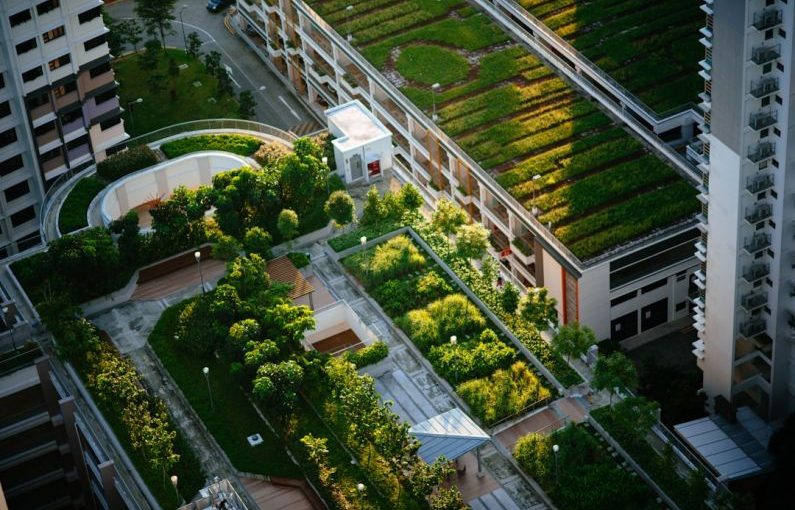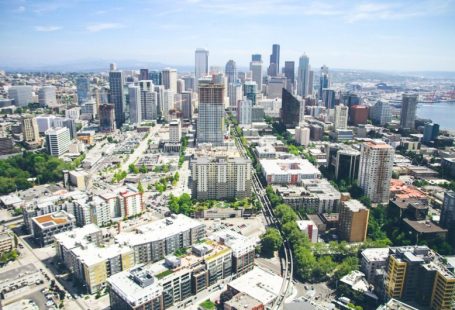In today’s rapidly urbanizing world, the concept of green cities has gained significant traction as a means to create more sustainable and environmentally friendly urban spaces. Green cities are designed to prioritize sustainability, promote eco-friendly practices, and enhance the overall quality of life for residents. From innovative green infrastructure to urban agriculture initiatives, these cities are leading the way in redefining what it means to live in a modern, sustainable urban environment.
Sustainable Urban Planning
Sustainable urban planning lies at the heart of creating green cities. This approach emphasizes the importance of designing cities in a way that minimizes environmental impact, reduces energy consumption, and promotes efficient land use. By prioritizing public transportation, pedestrian-friendly infrastructure, and green spaces, cities can reduce their carbon footprint and create a more livable environment for residents. Sustainable urban planning also involves incorporating renewable energy sources, such as solar panels and wind turbines, into city infrastructure to reduce reliance on fossil fuels and decrease greenhouse gas emissions.
Green Infrastructure
One of the key components of green cities is the development of green infrastructure. This includes the implementation of sustainable drainage systems, green roofs, and permeable pavements to manage stormwater runoff and reduce the risk of flooding. Green infrastructure helps to improve air quality, mitigate urban heat islands, and enhance biodiversity in urban areas. By integrating nature into the built environment, green cities can create healthier and more resilient communities for residents to enjoy.
Urban Agriculture
Urban agriculture plays a crucial role in promoting sustainability and food security in green cities. By introducing community gardens, rooftop farms, and urban orchards, cities can provide residents with access to fresh, locally grown produce while reducing the carbon footprint associated with transporting food long distances. Urban agriculture also helps to promote social cohesion, improve food sovereignty, and create green spaces that benefit both humans and wildlife. By integrating agriculture into urban planning strategies, green cities can foster a more sustainable and resilient food system for the future.
Waste Management
Effective waste management is essential for creating sustainable cities. Green cities prioritize waste reduction, recycling, and composting to minimize the amount of waste sent to landfills and incinerators. By implementing recycling programs, promoting composting initiatives, and encouraging the use of reusable products, cities can significantly reduce their environmental impact and conserve valuable resources. Green cities also invest in waste-to-energy technologies and innovative recycling processes to turn waste into renewable energy and raw materials, further enhancing their sustainability efforts.
Green Building Design
Green building design is another critical aspect of creating sustainable cities. By incorporating energy-efficient technologies, sustainable materials, and passive design strategies, cities can reduce energy consumption, lower greenhouse gas emissions, and improve indoor air quality in buildings. Green buildings also prioritize water conservation, waste reduction, and the use of renewable energy sources to minimize their environmental impact. By promoting green building practices and certifications, green cities can lead the way in creating healthier and more environmentally friendly urban spaces for residents and future generations.
Green Transportation
Green transportation is key to reducing carbon emissions and promoting sustainable mobility in cities. Green cities prioritize public transportation, cycling infrastructure, and electric vehicles to reduce traffic congestion, improve air quality, and enhance the overall well-being of residents. By investing in public transit systems, bike-sharing programs, and electric vehicle charging stations, cities can encourage residents to choose sustainable transportation options and reduce their reliance on fossil fuel-powered vehicles. Green transportation initiatives not only help to combat climate change but also create more livable and vibrant urban environments for people to live, work, and play.
In conclusion, green cities represent a paradigm shift in urban planning and design, focusing on sustainability, resilience, and quality of life for residents. By incorporating sustainable urban planning practices, green infrastructure, urban agriculture initiatives, waste management strategies, green building design, and green transportation solutions, cities can create more environmentally friendly and livable urban spaces for current and future generations. Green cities are not just a vision for the future but a tangible reality that is already shaping the way we live, work, and interact with our urban environments. As we continue to confront the challenges of climate change and rapid urbanization, green cities offer a roadmap for building a more sustainable and equitable future for all.





